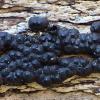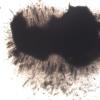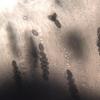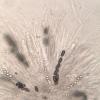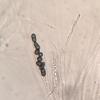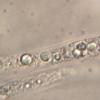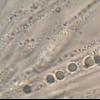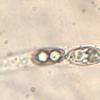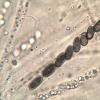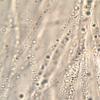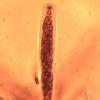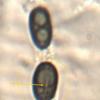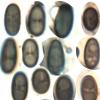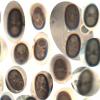
22-12-2025 00:47
Patrice TANCHAUDBonsoir, récolte à proximité du milieu dunaire

21-12-2025 21:32
Pol DebaenstHello, Garden, Burgweg 19, Veurne, BelgiumOn 10/1

21-12-2025 21:40
Isabelle CharissouBonjour, j'aimerais connaitre les références de

21-12-2025 21:31
Pol DebaenstHello, Garden, Burgweg 19, Veurne, BelgiumOn 10/1

21-12-2025 21:31
Pol DebaenstHello, Garden, Burgweg 19, Veurne, BelgiumOn 10/1

20-12-2025 23:08
Patrice TANCHAUDBonsoir, récolte sur sol sablonneux dans l'arri�

21-12-2025 09:32
Hello.A tiny ascomycete found embedded in wood in

20-12-2025 15:47
Mirek GrycHi.These grew on pine wood that was heavily covere
This pyreno was growing on the dead wood of a shrub (Myoporum) on the sand dunes close to the sea. I don't understand its features and need your help.
Thanks in advance,
zaca
Some data:
Spores: 1-septate, brown, ellipsoid with round ends, dimensions (mostly measured inside the asci):
(9.1) 9.6 - 11.7 (12.8) × (4.9) 5.3 - 6.1 (6.4) µm
Q = (1.4) 1.6 - 2.2 (2.4) ; N = 28
Me = 10.8 × 5.7 µm ; Qe = 1.9
Hymenium: I-
Ascus tip: I+ blue

have a closer look at the spores, they are not septate. It is a Nemania, N. maritima (Xylariaceae).
If you manage to make a better preparation you will see that the spores have a short germ slit.
Cheers,
Jacques
Firstly, I did not look closely at the spores; Right, they may look septate, but they are not; This was one of the points in doubt because with septate spores I could not go anywhere ...
Secondly, you should know this pyreno very well, since you could recognize it immediately, even with wrong accompanying data;
I looked at the topics in AscoFrance and found one by Henrique Rubio:
Http://ascofrance.com/forum/23616/nemania-maritima
where in 2013, he was able to identify the first specimen for Spain. So it's a rare species for sure.
I will look at it better in a new preparation, but as Henrique pointed out in his topic, the germ slit is difficult to observe.
Finally, can you send me a copy of the following document?
Ju Y.-M. & Rogers J. D. 2002. - The genus Nemania (Xylariaceae). New Hedwigia, 74 (1-2): 75-120
Are there any other useful references?
I do not know whether this is relevant or not, but the epithet "maritima" is certainly linked to sea influence, and my specimen was found on the sand dunes near the Atlantic Ocean.
My very best regards,
zaca

The pdf is on its way.
Cheers,
Jacques
Thanks again, Jacques.
Best regards,
zaca

Jacques
As promised I return to the microscopic observation to search for evidences of the germ slit. I found many, but again the preparation was not so good as it should. On the other hand, some slit to be observed demands to unfocus the spore and the result is a poor photo. Most of the germ slit are straight but other are curved. Anyhow I compile some of these photos and drop them into a larger one, that at the end I had to split because of the size of the file.
Regards,
zaca

